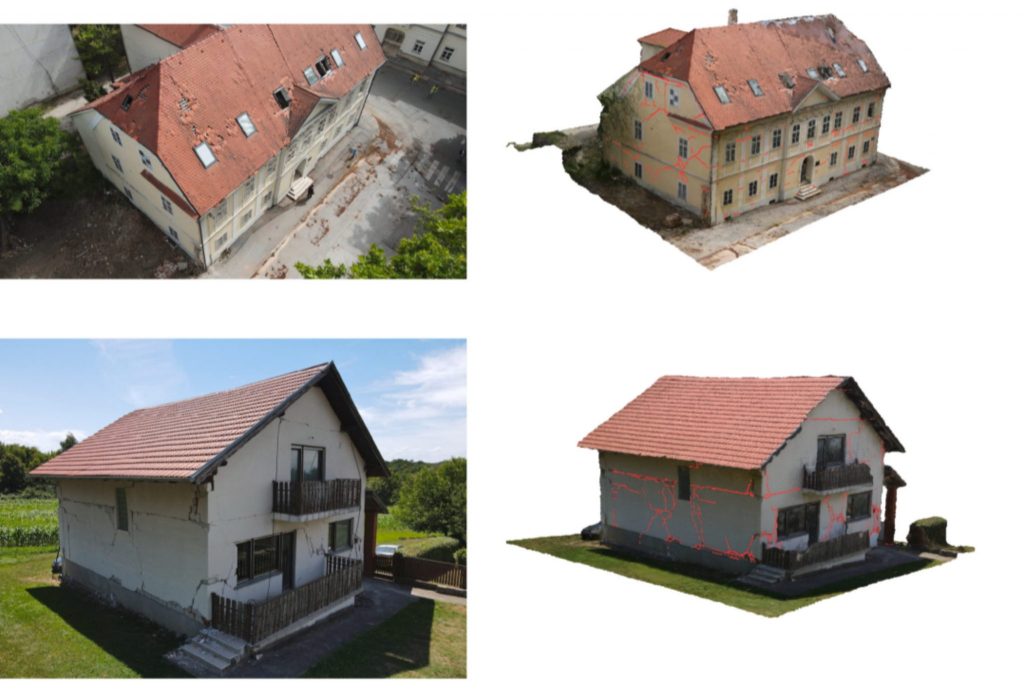The current practice for the rapid inspection of buildings damaged due to an earthquake is subjective, time-consuming, and cumbersome to document. This necessitates developing and implementing novel solutions to automate and streamline the inspection process. Despite the progress in imaging technology and artificial intelligence, particularly in computer vision, their application in infrastructure assessments is still in its infancy. This work presents a comprehensive pipeline aimed at creating damage-augmented digital twins of buildings, encompassing both geometrical details and information on damage conditions and their classifications.
Our approach utilizes multi-view imagery to (1) construct a detailed model, (2) segment and identify damage information, and (3) categorize the damage. The foundation of our methodology is built upon structure-from-motion techniques for reconstructing building geometry, coupled with machine-learning algorithms that are capable of segmenting and identifying different types of damage. Unlike existing methods, our approach eliminates the need for manual input, yields more manageable models, and is versatile enough to be applied across various assets.

- Article:
- Damage-augmented digital twins towards the automated inspection of buildings [journal link]
- Source code: [source code link]
- Dataset: [dataset link]
- Funding: This work was partially funded by the Swiss Data Science Center (SDSC).